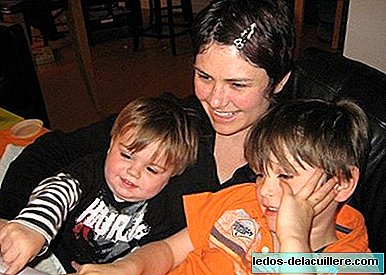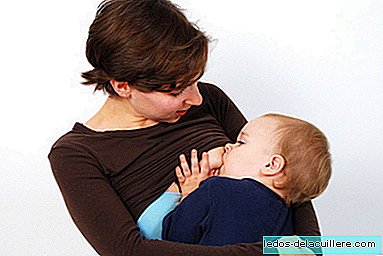
Ionizing radiation is a type of energy released by atoms in the form of electromagnetic waves or particles. Although people are exposed to natural sources of ionizing radiation, it is artificial sources, such as X-rays and some medical devices that concern us. Radiation can cause damage to organs and tissues depending on the dose received or the dose absorbed. And, in recent times, our children are more exposed to ionizing radiation in the medical field.
That is why the World Health Organization has published a document that emphasizes radiation risks in pediatric imaging, that is, in all those clinical applications in the diagnosis and treatment of human diseases that use ionizing radiation. X-rays, tomographs ... has your child already been there?
Advances in technologies that use ionizing radiation have progressively increased the number of clinical applications in the diagnosis and treatment of human diseases, which has had a positive impact on the pediatric population. These are some applications:
Computerized and digital radiography is replacing conventional radiography (with film), provided images that are immediately available to be analyzed and distributed electronically, with lower costs and easier access.
Computed tomography (CT) is a valuable instrument for studying pediatric diseases and injuries, which often replaces less accurate or more invasive diagnostic procedures.
Interventional procedures guided by fluoroscopy make it possible to avoid surgical options that carry a relatively higher risk of adverse events in children.
Nuclear medicine enables structural and functional studies, a fact that is especially evident with hybrid techniques.
Dental radiology has evolved, and in some regions dentists and orthodontists increasingly use conical beam CT to obtain three-dimensional images of the face and teeth.
These advances save lives and have an unquestionable diagnostic value, but WHO recalls that inappropriate or inexperienced use of these technologies can lead to unnecessary exposures that increase risks and do not provide additional benefits to pediatric patients.

How to use radiation in medicine minimizing risks?
It is true that Radiation doses emitted during diagnostic procedures are low and it is not foreseeable that they produce acute lesions, but interventional imaging-guided procedures can emit doses high enough to produce effects such as skin lesions.
Non-deterministic risks are especially worrisome in pediatric imaging, given that children are more vulnerable than adults to suffer from certain types of cancer and have more time to live before the long-term effects of radiation on health appear .
What WHO proposes, then, is radiation safety in pediatric imaging improved, minimizing the risks, and that its benefits are weighed against the risks of radiation exposure. In summary, it would be a question of applying the two principles of radiological protection in medicine: justification of the procedures (performing the correct procedure) and optimization of the protection (performing it correctly, keeping the doses as low as reasonably possible).
Therefore, the minimum possible dose should be used in medical imaging to obtain adequate diagnostic images. And in addition, health professionals who request or perform radiological imaging tests in children have a shared responsibility for properly and effectively communicate radiation risks to patients and their parents.
Of course, this would be possible if medical professionals were aware of these issues, but WHO itself notes that Health professionals' knowledge about radiation doses and their risks in medical imaging can be scarce.
In the document published by the WHO, entitled "Communication on the risks of radiation in pediatric imaging", the different approaches to establish this dialogue in the clinical environment are discussed, and in particular the communication with the pediatric patient. It offers practical advice to support the dialogue on risks and benefits, and includes examples of frequently asked questions and corresponding answers, which can also be used to develop informational materials for patients and their families.
Ethical aspects related to communication about radiation risks in pediatric imaging are also examined and some concepts and principles of radiation protection are examined, how to apply them in children ...
Definitely, it is essential to reduce children's exposure to radiation in medical care, but without reducing the quality of assistance. We hope that these questions and the advice of the WHO reach many medical professionals, since our children are in their hands. And the next time they send us an x-ray, that is because it is absolutely necessary.
Photos | iStock
More information | WHO
In Babies and more | How to prevent congenital anomalies, X-rays and pregnancy: what you should know












